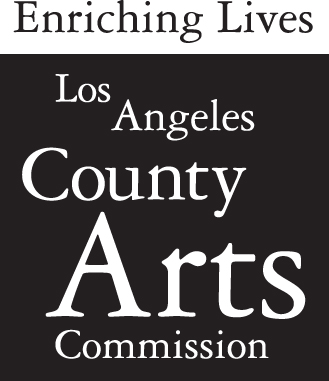 |
 |
 |
 |
 |
 |
| Room | LACE: Twenty Gallons | Seattle City Light |
Photos: Joshua White
|
Twenty Gallons
Twenty Gallons is a large scale, site specific installation commissioned by LACE (Los Angeles Contemporary Exhibitions) where Livingston covered the monumental 15-foot tall archway in LACE’s front gallery with a series of panels constructed entirely from, as her title suggests, twenty gallons of acrylic paint. The installation exists (deliberately so) within multiple overlapping and potentially conflicting contexts. While references to both the earnestness of Jackson Pollack’s manic gesturing and Roy Lichstenstein’s playful yet cooly calculated Three Brushstrokes are in abundance, arguable the most intriguing element of the installation its location, both literally and metaphorically; Twenty Gallons exists as a threshold between physical spaces and artistic disciplines. Livingston still utilizes acrylic paint as a primary sculptural material in the same manner that has come to define her more recent work, yet the playfulness of the candy-like surface and color palette are upset by the impossibility of experiencing the work as a cohesive and unified whole. Her previous “paint-objects” tended to be singular objects which could be understood much like a painting or plinth mounted sculpture. Twenty Gallons is an installation that asks the audience to consider it as both of those things yet neither simultaneously. The scale and narrow dimensions of the work make it difficult to inhabit as a traditional installation; when one views the work from a distance, the work becomes distorted and difficult to comprehend, yet upon entering the work it flattens itself out and becomes an overwhelming panorama of mimicry and signification. Paint has been poured and treated like sculptural material which in turn has been formed to resemble “expressive” brush strokes, then layered to suggest particle board or some other architectural or sculptural material. Livingston’s work is necessarily ambiguous at the moment as it is suggestive of the artist moving away from a material critique of late modernism towards a more complex and open ended investigation of the slippages that are produced within the shifting relationships between material, location, and scale. — Robert Crouch BIO SUPPORT |
|
Room 2009 In 2009, I accepted the challenge of creating new work in an unfamiliar medium. The venue was Expo, a show by the members of SOIL, Seattle’s artist-run gallery for developing, exhibiting, and advancing experimental and innovative art. The assignment I gave myself for Expo was to use paint as a sculptural medium. It’s not that sculpture was completely new to me. It has been my practice for a long time to clarify my ideas about light, form, and space by building objects as models for my paintings. Although the paintings that emerge from this practice may look like abstractions, they are actually concerned with the same phenomena elucidated by the models. But, facing the Expo challenge, I found myself becoming curious about the influences that painting could have on the way I build things. And so, in a reversal of my usual process, I began using paint to construct objects. The piece I made for Expo was called Room. It consisted of a single continuous row of paint drops lined up at eye level all the way around the gallery’s walls and front window. This two-dimensional painting had the effect of turning the gallery itself into a painting that the viewer could enter as a three-dimensional space. It became the first major piece in a new body of work that teases out and holds the tension between actual space and an illusion of space. |
Photos: Richard Nicol
|
Commissioned by Seattle City Light 1% for Art Portable Works Collection As Part of the Elevator Lobbies Project Best Sunny Day 2008 Livingston has created four related but unique experiences of color, light, and space, bridging the gap between abstraction and representation. The source for all the paintings is the same—a 6’ x 6’ x 6’ grid of string she built in her studio. |
| ^ top of page |











